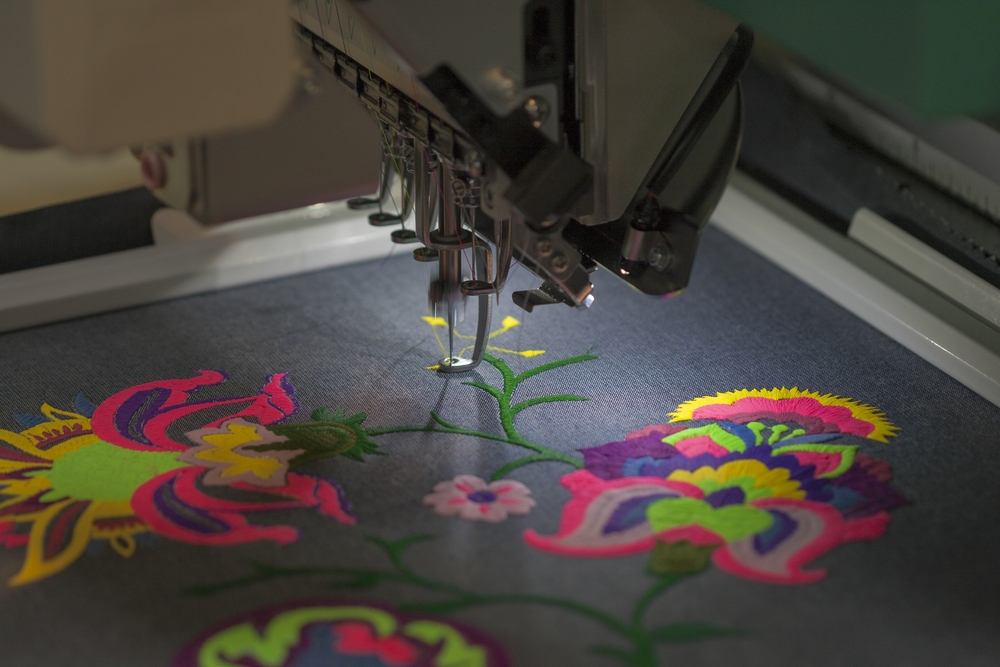High-Quality Digitizing for Embroidery: Expert Craftsmanship
High-Quality Digitizing for Embroidery: Expert Craftsmanship
Blog Article
Streamlining the Art of Embroidery Digitizing: Step-by-Step Guide
As technology proceeds to development, the digitization process has actually ended up being much more accessible, permitting lovers to bring their elaborate designs to life with convenience. In this overview, we will unravel the intricacies of embroidery digitizing, breaking down each action methodically to enhance the process and equip both beginners and experienced embroiderers alike.
Understanding Needlework Digitizing Software Application
Embroidery digitizing software program functions as a critical tool for changing intricate styles right into digital styles suitable with needlework equipments, helping with specific sewing and customization. This specific software program allows individuals to import various image data styles, such as JPG or PNG, and transform them right into embroidery machine-readable formats like DST, EXP, or PES - Digitizing for Embroidery. By utilizing features like stitch editing, rug choices, and string shade option, digitizing software allows individuals to manage every facet of the layout procedure
Moreover, advanced embroidery digitizing software program uses tools for producing complicated layouts, adjusting stitch density, and integrating complex information. Individuals can likewise preview the style before stitching it out, making sure precision and minimizing mistakes. Additionally, many software application supply automated features that help enhance the digitizing procedure, saving effort and time.
Recognizing the capacities of needlework digitizing software program is essential for achieving top quality lead to needlework jobs. By grasping this tool, embroidery enthusiasts and specialists can release their creative thinking and bring complex styles to life with precision and efficiency.

Picking the Right Layout Documents
After acquainting on your own with the abilities of embroidery digitizing software, the next crucial action in the procedure is choosing the best design declare your task. Digitizing for Embroidery. When picking a style declare embroidery digitizing, it's necessary to take into consideration the intricacy of the layout, the size of the final item, and the kind of material you will be dealing with
For elaborate designs with fine details, a high-resolution image or vector data is suggested to make sure that the needlework maker can precisely duplicate the design. Additionally, the size of the final product plays a significant role in picking the ideal design documents. Larger layouts may call for higher resolution documents to preserve quality and sharpness.
In addition, the sort of textile you will be stitching on affects the option of design data. Different textiles may call for modifications in the layout data to ensure that the stitches are effectively lined up and the layout looks like intended. By meticulously choosing the appropriate layout documents based on these factors, you can establish on your own up for a successful embroidery digitizing procedure.
Digitizing Devices and Techniques
Using specialized software program and accuracy strategies, digitizing devices are important in transforming intricate layouts right into embroidery-ready files. Needlework digitizing software application, such as Wilcom, Hatch, or Embrilliance, provides the necessary system to transform art work right into stitch information. These programs use attributes like stitch editing, underlay options, and lettering tools to ensure the design translates effortlessly onto material.
Among the crucial methods in digitizing is producing a clear course for the needlework machine to follow. This involves digitizing each element of the design with precision, figuring out stitch kinds, thickness, and directions. By utilizing devices like digitizing tablet computers or software-specific plugins, embroiderers can attain a high level of accuracy in their digitized styles.
Moreover, understanding the art of padding sewing is vital for creating high quality embroidery. Underlay sewing maintains the textile and produces a foundation next page for the layout, making certain that the last product is both visually enticing and resilient. By recognizing these digitizing tools and techniques, embroiderers can boost their craft and bring complex designs to life with accuracy and effectiveness.
Tailoring Stitch Kinds and Instructions
The choice of stitch kinds can considerably affect the overall appearance and appearance of the embroidered style. By purposefully combining these stitch types, embroiderers can attain depth and dimension in their styles.
Additionally, the instructions of stitches plays a crucial role in enhancing the visual appeal of the final embroidery. By experimenting with different stitch angles and patterns, embroiderers can bring their designs to life with remarkable detail and intricacy.
Testing and Refining Your Digitized Design
To ensure the accuracy and quality of your digitized design, extensive screening and refinement are necessary action in the needlework digitizing procedure. Once you have actually finished the digitization of your style, it is vital to check it before proceeding with the actual this post embroidery. Testing allows you to recognize any kind of prospective problems such as thread breaks, sew thickness troubles, or layout distortions that might influence the result.

After screening, it is very important to fine-tune your digitized design based on the comments from the examination sew-out. This might entail tweaking stitch find settings, adjusting densities, or making modifications to the total design to attain the preferred result. By repeating through testing and improvement, you can adjust your digitized design to perfection prior to moving ahead with the real needlework procedure.
Verdict
To conclude, mastering the art of embroidery digitizing needs an extensive understanding of the software, choosing the ideal layout file, using digitizing devices and strategies, personalizing stitch types and directions, and testing and refining the digitized style. By adhering to these steps, embroiderers can streamline the digitizing procedure and produce high-quality stitched styles with precision and efficiency.
Report this page